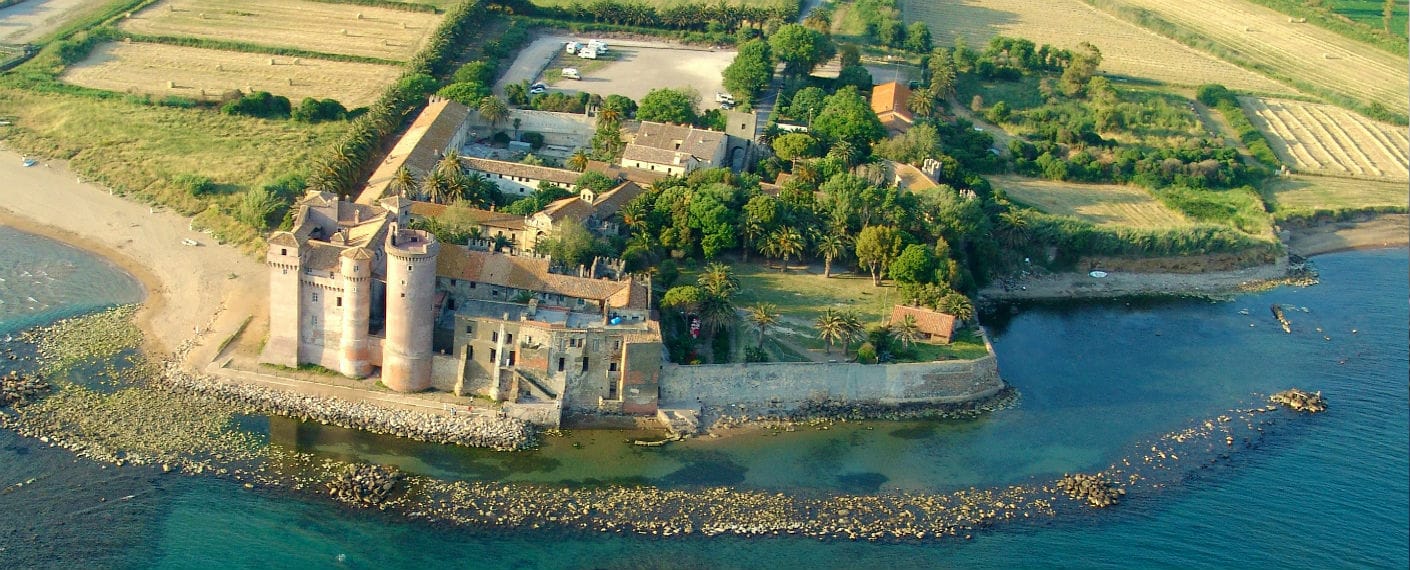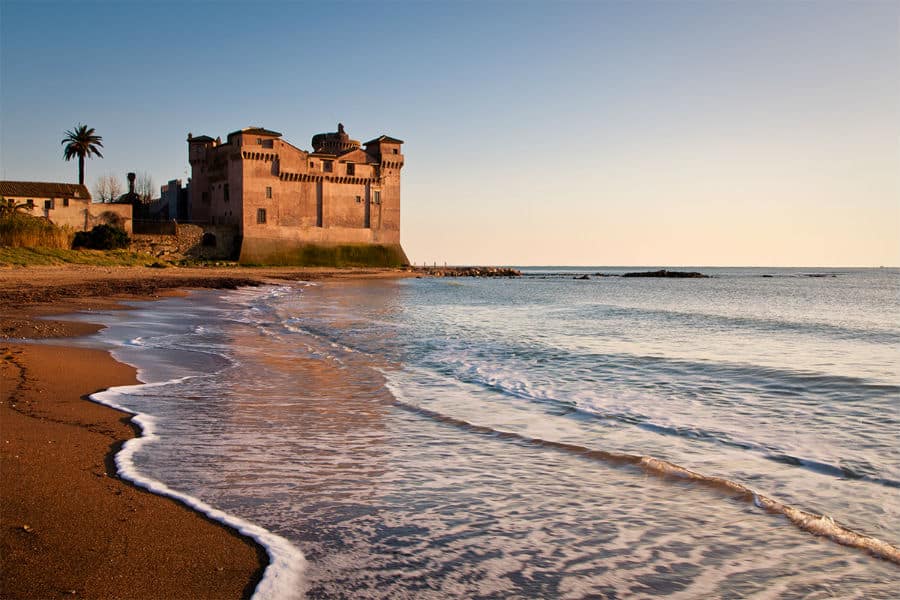The Castle of Santa Severa, located along the picturesque Tyrrhenian coast north of Rome, is one of the most evocative and historically rich places in Lazio. This ancient manor, nestled in an extraordinary natural setting, stands majestically on the beach, attracting visitors not only for its architectural charm, but also for the stories and legends that permeate its walls. Its history is rooted in the past, going back to ancient times and spanning different civilizations.
The castle owes its name to the young Christian martyr Severa, who was killed here on June 5, 298 A.D., together with her brothers, Calendino and Marco, during persecutions under Diocletian’s empire. The memory of these events is preserved by the Early Christian Church, the remains of which can be seen in the Piazza della Rocca and date from the mid-5th century. These remains testified to the religious importance of the place from ancient times.
The area on which the castle stands was originally an Etruscan settlement called Pirgy, which later became a Roman colony. The remains of Roman fortification walls are still visible, and the site has undergone considerable transformations over the centuries. During the imperial age, the military structure was transformed into a residence of noble Roman families, who built sumptuous villas overlooking the sea. As time passed, the area was enriched by a vast cemetery, active from the 9th century until the 13th-14th centuries, which continues to tell the story of the daily lives of those who lived here.
Construction of the castle as we know it today began in the 14th century. The rectangular plan of the castle is characterized by angular towers and a moat surrounding the entire complex. The most emblematically historic part is the “Male,” a cylindrical tower that dates back to the 9th century and was commissioned by Pope Leo X. This tower, thanks to subsequent renovations, has retained much of its original structure, coming down to us as a testament to the power and defensive strategy of the Church.
The castle has played a significant role throughout history. The first documented mention dates back to 1068, when the Norman Count Gerard of Galeria donated the castle and church to the Abbey of Farfa. In 1482, Pope Sixtus IV ceded it to the Order of the Holy Spirit, which owned it for over five hundred years. This period also saw the birth of the Borgo di Santa Severa, characterized by architecture typical of the time and enriched by the Order’s emblem: the patriarchal cross.
After a long period of decline, the castle was used by the Germans during World War II, bearing witness to further layers of its history. Today, Santa Severa Castle houses the Museum of the Sea and Ancient Navigation, an institution that explores and celebrates the deep connection between this land and maritime life. The museum offers a journey through the history of navigation and fishing, with a focus on traditional seafood dishes, such as lobster, that make the local cuisine famous.
The museum has three levels and features archaeological artifacts unearthed during recent excavations, allowing visitors to immerse themselves in various historical eras. Exhibits include reconstructions of medieval environments, everyday objects, and valuable artifacts, such as the seal of Pietro Romano Bonaventura.
Recent musealization has led to the introduction of digital technologies, such as augmented reality and 3-D reconstructions, which enrich the visitor experience. Through a dedicated app and virtual reality devices, guests can embark on a journey through time, discovering the life of the castle and the stories of historical figures who inhabited it.
Santa Severa Castle is not only an architectural marvel, but a custodian of stories, legends and cultures that have been intertwined throughout centuries of history. Its beauty and cultural heritage make it a must-see destination for anyone wishing to explore Lazio, discovering its historical roots and its connection to the sea.
Opening times:
April 1 – June 30
Tuesday to Friday from 09:00 a.m. to 6:00 p.m.
Saturdays, Sundays and holidays from 10:00 a.m. to 7:00 p.m.
July 1 – September 1
Tuesday to Sunday and holidays from 17:00 to 00:00
September 2 – October 31
Tuesday to Friday from 09:00 a.m. to 6:00 p.m.
Saturdays, Sundays and holidays from 10:00 a.m. to 7:00 p.m.
November 1 – March 31
Tuesday through Friday from 9:00 a.m. to 4:00 p.m.
Saturday, Sunday and holidays from 10:00 a.m. to 5:00 p.m.
Closed on Mondays



